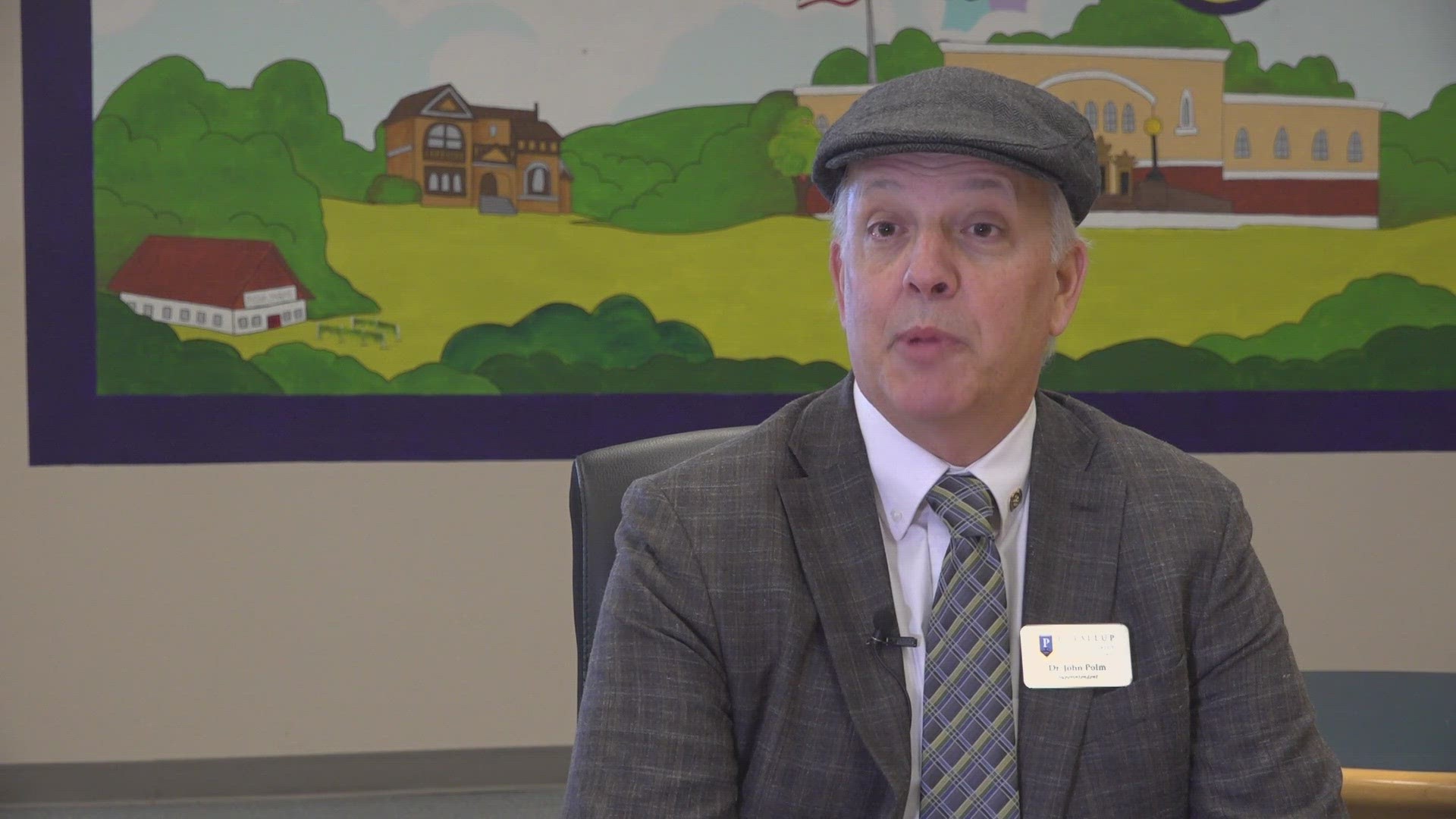PUYALLUP, Wash. — The Puyallup School District is one of many school districts across the state preparing to meet the requirements of the Washington state's Clean Buildings Act.
The district said the requirements accelerate the need for work already being pursued, but there are some challenges in regards to funding. The district is hopeful voters will support its efforts.
Meanwhile, the Washington State Department of Commerce is offering one-on-one assistance and other resources to try to help building operators meet the requirements passed by legislators.
The Clean Buildings Act passed in 2019 and expanded in 2022. It is meant to reduce greenhouse gas emissions from the state's largest buildings. The original legislation applies to buildings over 50,000 square feet, and requires them to evaluate energy use in the building, keep maintenance and operations plans, and make adjustments to buildings to reduce energy use if they are over target amounts. The expanded legislation applies to buildings between 20,000 and 50,000 square feet, and for now only requires benchmarking and maintenance and operations planning. There are some exemptions, including for manufacturing, agriculture and industrial buildings. In many cases, incentives, and financing help are available.
"Two main factors contribute to emissions in large buildings," said Emily Salzberg, the Buildings Unit managing director for the Washington State Department of Commerce. "How energy is used throughout the building -- one example is if you have a really drafty building, you're paying to heat the building and a lot of that is escaping through cracks, doors, windows, [etc]. Also the fuel type for those buildings -- for how they're heated and cooled -- can contribute to emissions as well. So there's different emissions coming from electricity, natural gas, oil, and propane for example."
Puyallup School District leadership said it will need "significant building upgrades district-wide" to comply with the law.
"It's something we're always working toward, is being good stewards of the dollars our taxpayers provide to schools to operate," Superintendent Dr. John Polm said. "However, there's a lot of challenges with the Clean Buildings Act we need to work toward and overcome, which of course are primarily due to financing challenges- in terms of all the upgrades that will be needed to meet the standards that the Clean Buildings Act is requiring."
The district is working with a contractor to assess where changes are needed and make those fixes. However, it will likely need voters to approve a levy on a February 2024 ballot to cover the costs, or it could face penalties.
"We appreciate well intentioned legislation, and we think there should be additional state funding that would help support schools and other entities required to comply with the Clean Buildings Act," Superintendent Polm said. "However we also understand the cost for any capital improvements within the school district is really going to fall on our local voters, who support local levies."
Polm said the district has already been aggressive in terms of putting systems into place to conserve energy, including controls for HVAC and lighting systems. Still, with so many buildings and occupants, there's work to do.
Most districts are working toward meeting the requirements. Tacoma Public Schools, for one, says it has built the required Energy Star portfolio manager used for tracking, which "required compiling and entering building characteristics for 70 buildings, along with working with local utilities to ensure we were receiving monthly uploaded billing data," according to a spokesperson. It is using voter-approved bond dollars earmarked for HVAC and lighting upgrades, and has gotten some grant funding. It also has someone on staff with resource conservation experience.
Everett Public Schools says it passed a capital levy in February 2022 that included $30 million for Clean Buildings Act compliance projects at five schools, along with three building replacements and 1 building modernization. The funds will be collected from 2023-2028.
"We have no other current secured funding for this work, and the amount that we did secure in the 2022 capital levy is far short of what the CBA ultimately requires," a spokesperson wrote in a statement. "Our major sources of funds for all capital projects including CBA compliance projects are voter approved capital bonds and levies."
Everett school officials said its first major compliance project is going out to bid and construction will begin this summer.
The Department of Commerce said in the case that schools cannot obtain additional funding, financial hardship exemptions are available. They can apply and receive an exemption for the next compliance cycle. But the department said whether they can make upgrades right away or not, the process is beneficial for saving energy and money.
"There's a lot that can be done with low cost, no cost options building owners can take to substantially reduce their energy use," Salzberg said.

